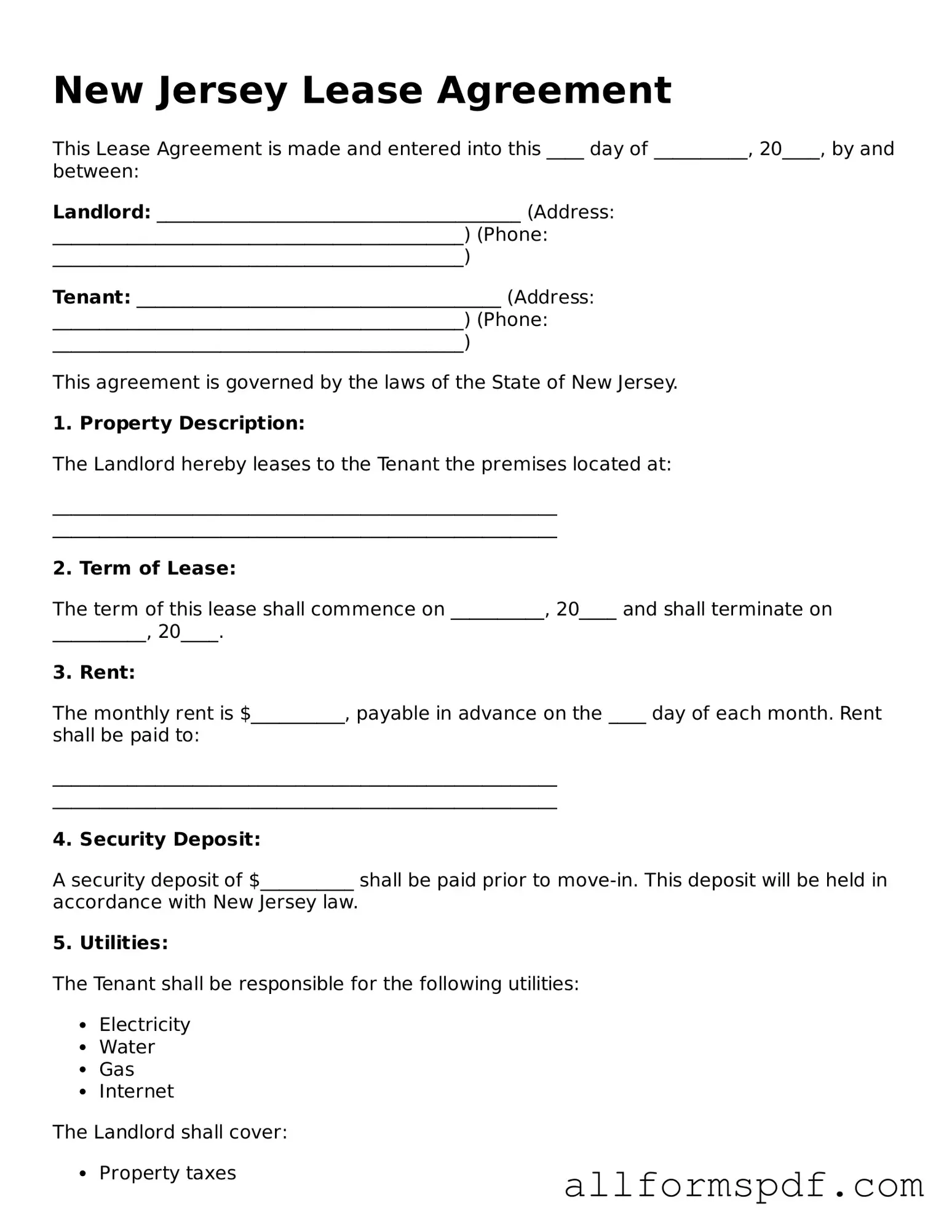Fillable Lease Agreement Form for New Jersey
A New Jersey Lease Agreement is a legally binding contract between a landlord and a tenant, outlining the terms and conditions for renting a residential property. This document serves to protect the rights of both parties while providing clarity on important aspects such as rent payment, duration of the lease, and maintenance responsibilities. Understanding the details of this form is essential for a smooth rental experience in New Jersey.
Create My Lease Agreement Now
